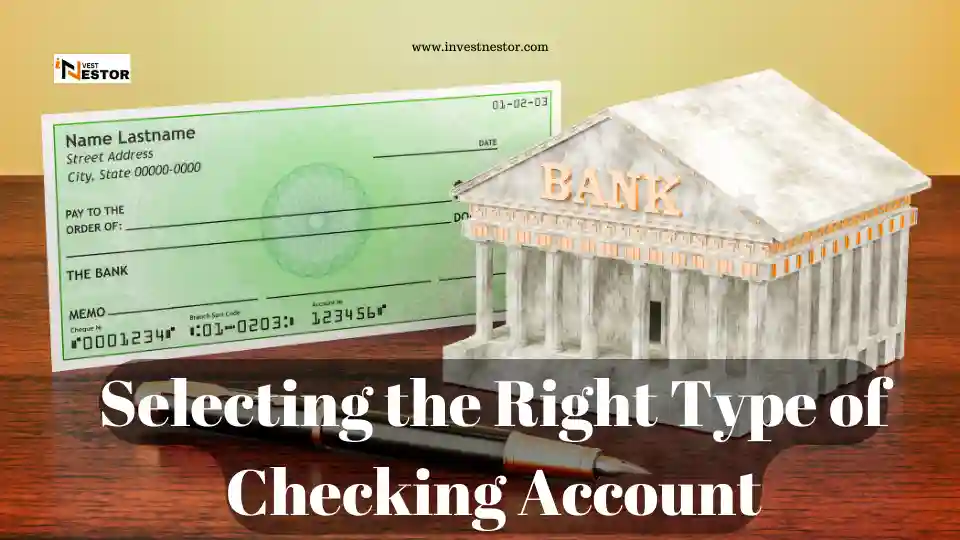
How To Open A Savings Account & How It Works
Optimizing your financial resources is a prerequisite to starting a savings account. Cash in savings accounts often yields interest—up to 5%, at most—beyond the 0.46% average savings rate across the country. Are you all set to begin? Below is the process for opening a savings account. So, let's examine the savings account pros and cons.
Key Highlights
- Savings accounts are ideal for short-term funding since they earn interest and are readily available.
- In exchange for convenience and liquidity, savings accounts offer lower interest than more limited savings tools and investments.
- In general, you can withdraw an infinite amount from a savings account.
- Your savings account interest is regarded as taxable income.
What is a savings account?
Savings accounts, which pay interest, are basic financial services. The feds insured these interest-bearing accounts with $250,000. You can save your money in a credit union or a bank. A savings account can be opened with little funds, but withdrawals are limited to one per month.
You can safely put your emergency fund or immediate needs money in a savings account. Most US banks and credit unions offer these accounts, which can help you save more due to interest. Open a savings account by obtaining documentation, registering for online banking, and comparing rates and expenses.
How does a savings account work?
You can open a savings account with a bank or a credit union in person or online. It is like opening a bank account. After giving the institution your personal details, you will fund the account.
Your savings account starts earning interest when you deposit money. What you receive from it depends on its annual percentage yield (APY), the amount you deposit, and the balance in the account.
Banks may compound interest daily, monthly, quarterly, or yearly. The end of each compounding month credits your account with interest. After that, interest will be paid on the balance of deposits and interest in your new account.
Assume you put in $10,000, and your bank compounds interest once a year. You would make $10 per year with a 0.1 per cent APY. However, a 4% high-return savings account would only earn $400. Your new balance, $10,010 or $10,400, would start earning interest.
Shorter compounding periods accelerate money growth. The APY on your savings account may rise or fall at any time. Though you may withdraw as much money as you like from your savings account anytime, most banks let only six monthly withdrawals.
Pros and Cons of Savings Accounts
Pros
Here are some savings account benefits:
- Security: Up to $250,000 in savings can be protected with accounts held at banks and credit unions that the FDIC or NCUSIF guarantees.
- Growth: Your money increases since most savings accounts pay interest.
- Liquidity: The limit is normally six per statement cycle for withdrawals or transfers from savings accounts.
- Organization: By keeping your savings in a separate account from everything else, you can track progress and control costs. You'll also gain unparalleled insight into how money works for spenders like yourself!
Cons
Here are several disadvantages of a savings account:
- You can find higher yields elsewhere: Savings accounts' principal disadvantage is that their interest rates may be lower than those of other financial products despite the potential for increased risk associated with other investments.
- Restrictions on accessibility: Most banks allow six withdrawals or transfers from savings accounts during each statement cycle.
- Purchasing Power declines: If the inflation rate is greater than your savings account interest, for instance, then your buying power will diminish with time.
How to Open a Savings Account?
It is simple and easy to open a savings account by following several steps.
1. Consider your options.
Ascertain that the bank you have selected is appropriate for your needs before opening an account. While choosing, important aspects to consider are as follows:
- Annual percentage yield (APY) that is competitive
- minimal balancing requirement that is low or nonexistent
- A little, nonexistent monthly charge, or one that is simple to avoid
- The availability of ATMs without fees
- Branches' accessibility
- Accessible banking services on mobile devices and the internet
- The National Credit Union Administration or FDIC insurance
Creating a savings account at a bank is easy if you have a checking account. Examine alternative options to verify your bank offers savings account features you value, such as competitive rates.
2. Compile the necessary paperwork
Any bank account you open will require you to submit certain documentation and personal information. When opening the account in person or online, make sure you have the following information available, along with any joint account owners:
Documents proving identity issued by the government, such as,
- A passport or driver's license.
- A social security number
- Address (as well as evidence of residency if your ID lists a previous address).
- Date of birth
- Contact details
- Bank account details, if any, to finance your new account
- Opening a new bank account may require removing a credit freeze.
3. Select an individual or joint account
Open a personal savings account. A joint account means you own it with someone else, like your spouse or child. If that's your goal, open a joint account.
Joint accounts have many benefits:
Money division is simpler for couples with children. Your FDIC insurance may exceed $500,000. Joint account ownership at an FDIC-insured bank protects savings up to $250,000. Your FDIC-guaranteed bank accounts total $250,000.
4. Add funds to your account.
An initial deposit may be required to create a savings account. Account opening deposits usually vary from $25 to $100. In-person account openings can be funded with cash or checks. You can regularly transfer money from a connected account or deposit money online using a mobile check.
Certain savings accounts contain monthly maintenance fees that may drain your funds beyond the original investment. Some banks require a several hundred dollar balance to avoid this penalty. When opening an account, ensure you deposit enough to satisfy the minimal starting deposit and avoid maintenance fees.
5. Send in your application.
After completing your application and providing all necessary information, wait for the bank to open your account. You can begin making more contributions in a business day or two, as this normally happens rapidly.
6. Open a bank account online.
Online banking makes simple operations such as transferring money, checking your balance, and managing accounts conveniently. Most financial institutions offer this service. To view your account anywhere, simply download the bank's mobile app and set up online banking.
How Interest Works on Savings Accounts
Interest is how savings accounts grow money. How interest works and why it's important for saving is explained here.
What's Interest?
Interest: the cost of borrowing or the reward of saving. The bank transforms savings into opportunities. Letting the bank use your money means you earn interest.
Types of Interest
Simple and compound interest are the main types. Basic interest only applies to the initial deposit. Still, you may earn interest on the principal and any additional funds put into your account via compound interest.
How to calculate interest
Most people calculate interest using an annual percentage rate. Account balances have an annual interest rate (APR). Interest earned depends on compounding frequency—daily, monthly, or annually.
Power of Compound Interest
Many call compound interest the "miracle of compounding." It grows savings enormously. More frequent interest compounding accelerates savings growth, making it effective for long-term savings and investments.
Influences on Interest Rates
Savings account interest rates depend on several factors, including the prevailing economic conditions, central bank policies, inflation rates, and the specific terms and conditions set by financial institutions.
Maximizing Your Savings with Interest
To make the most of interest on your savings account, consider these tips:
- Look for accounts with competitive interest rates.
- Regularly deposit money into your account to increase the principal amount.
- Take advantage of accounts with compound interest and frequent compounding periods.
Understanding savings account interest and using it to grow your savings will help you reach your financial objectives.
Conclusion
Savings accounts are an excellent instrument for anyone looking to save aside money for a goal or an emergency fund. Ultimately, banking frequently involves enduring partnerships. A study found that people keep their primary savings account open for an average of more than 17 years. Every one of your options—whether physical banks or virtual banks--should be examined to find the account with the lowest fees and highest interest. You'll find a decent deal if you take the time to compare pricing.
FAQs
Is your money safe in a savings account?
The FDIC insures banks, whereas the NCUA covers credit unions. It is generally safe for them to be there if you keep your money in these areas. In addition to depositors, insurance on deposits also covers institutions and types of accounts. The insurance coverage is around 250,000 USD. Almost no consumer will experience financial loss in the unlikely scenario that a bank or credit union fails. Besides saving for routine costs, you might store bonus funds.
Is it smart to leave money in a savings account?
Putting cash into a savings account for immediate purposes, emergency savings, or liquidity preservation is a smart and wise decision. Putting money into a deposit account may be reasonable. But to make money over the long term, looking into opportunities with higher potential returns may be more productive. One must consider each participant's financial comfort, willingness to take risks, and need for cash on hand when deciding how funds are shared.
What is a savings account?
Savings accounts are part of the deposit accounts offered by banks and other lending organizations. They enable people to deposit money and earn interest on what's left. Savings accounts help with money management, while checking accounts are used for quick transfers and other financial operations.
What are the disadvantages of a savings account?
Drawbacks to savings accounts may include:
- The actual value of withdrawn deposits and lower interest rates compared with returns on other kinds of investment.
- Limits are sometimes placed on withdrawals or transfers (often in small amounts).
- Service charges are charged by banks for maintaining individual account balances above a minimum figure.
Read Also:


 to Your Advantage.webp)



0 Comments
Add a comment